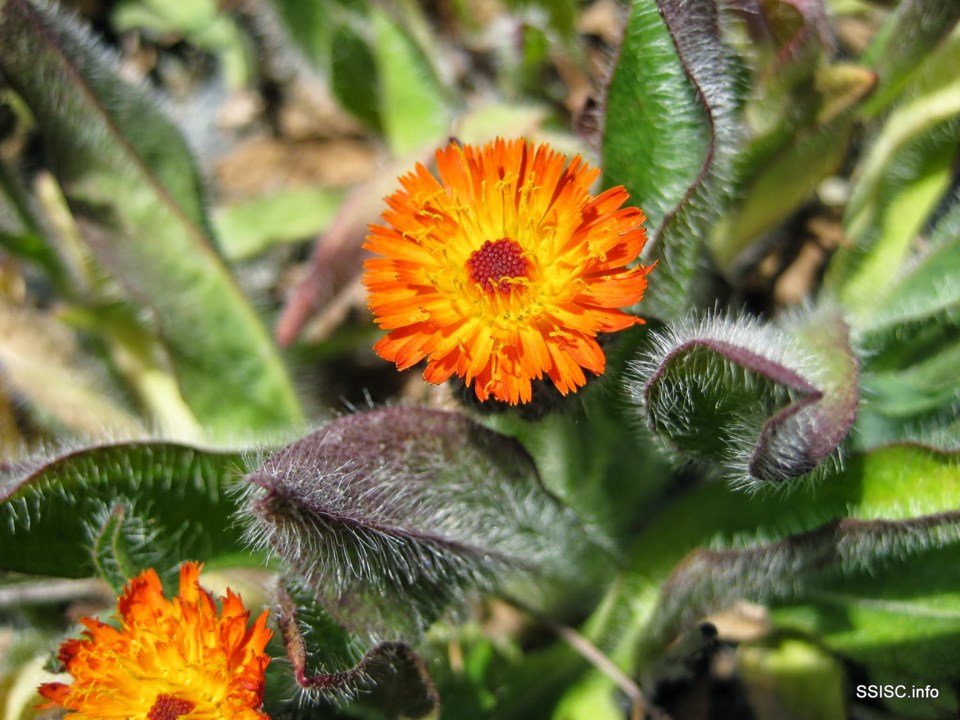The Sea to Sky Invasive Species Council (SSISC) has seen great success with its field program, according to its new executive director, Mica Anguita.
Anguita spoke to the Resort Municipality of Whistler (RMOW) committee of the whole on May 28, providing an update on the SSISC's annual programs, and how the organization used municipal funds in 2023.
“The main important bit is that across all jurisdictions within the RMOW boundary we saw signs of no regrowth in 66 per cent of sites compared to the previous year, which is a huge drop,” she said.
In 2023, the SSISC inventoried the Emerald Forest Conservation Area for invasive species, while crews also surveyed 165 project areas and mapped more than 1,100 square metres of invasive plants—and of that area, removed 337 square metres of invasive species through mechanical means.
All that work was through the SSISC field program, which in 2023 had $40,000 allocated to it from the $70,000 the SSISC received from the RMOW’s "fee for service" program funding groups that do important work in the community. The field program involves active invasive plant management and monitoring on RMOW lands.
Councillor Ralph Forsyth queried Anguita on whether she foresees a future where invasive species management is not required thanks to work in mitigation, but she replied she feels confident in her job security, to laughs from council.
“A high-priority species is managed because it poses a significant risk, whether it be to the environment or to human health,” she said. “Are there always going to be invasive species? One hundred per cent. Are invasive species going to be more along the lines of something that doesn’t pose as much of a threat? Ideally, yes.”
Anguita explained invasive species management is important on an economic level too, comparing Squamish—which has issues with invasive species that have overrun some areas and now impact the community—and Whistler, which has so far managed to stay ahead of the issue with mitigation efforts, and maintain a healthy ecosystem.
Queried on the greatest threat to Whistler when it comes to invasive plants, Anguita said yellow flag iris was previously a major issue because it was choking out the aquatic ecosystem, “but we’ve seen a huge decrease in that.”
She named Japanese knotweed as the primary concern in the valley, while in the alpine, Anguita said orange hawkweed is the primary issue.
“There is a patch of hawkweed on Blackcomb by the Rendezvous which, in theory, Vail [Resorts] should be controlling, but they’re not. And that’s spreading quite rapidly,” she said.
The hawkweed, she explained, is the most damaging to the environment, as it could control the surrounding ecosystem by preventing other species from growing.
Despite the pretty colours, orange hawkweed is identified by various invasive-species groups in Canada as being a noxious weed, as it can crowd out native plants, and create dense mats in an area in a short amount of time because single plants can produce hundreds of seeds.
Whistler Blackcomb's senior manager of planning and business development, Wendy Robinson, told Pique in an email the mountain operator is documenting invasive species in its internal mapping system.
"We started this process last year, working closely with our summer trail crew that are in field daily, keeping our ski runs maintained from overgrowth for winter season," said Robinson.
"When they see orange hawkweed, it is documented and we never cut it in bloom to avoid spreading it. Our goal is to remove it without the use of chemicals and we expect it to be a challenging process, as it can be with all invasive species. By mapping, we will be able to track where it is present, remove it and monitor how that removal is tracking, and if it pops up again the following season, at what scale, and then continue to work towards removing it from an area."
Robinson added WB makes efforts to clear hawkweed from the mountain wherever it appears—not just in public areas.
"It is important to eliminate it in all areas, even without people present," she said. "It is still an issue and can spread easily with wind, water and wildlife."
Robinson said both WB and the SSISC have been working together to document collected data on invasive species on the mountain.
"We welcome continued collaboration to tackle invasive species on-mountain and in the valley, whether it be with the SSISC or with other environmental consultants that we work closely with, including Cascade Environmental and ROE Environmental that provide expert guidance," she said.




